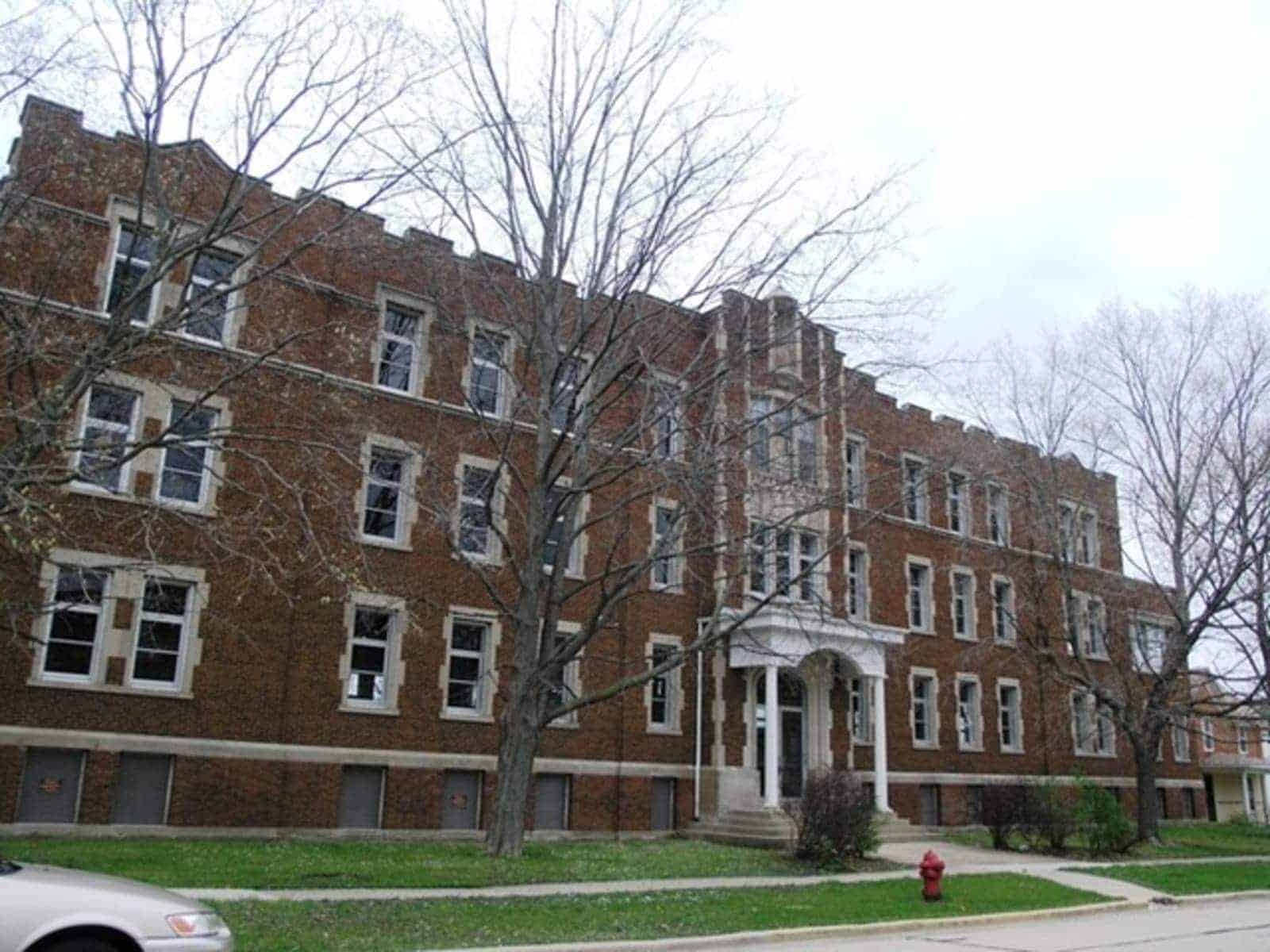Sycamore
Westgate Building/Sycamore Hospital | 1899/1900 – 215 West Elm Street – Built for Dr. Letitia A. Westgate, Sycamore. Dr. Westgate was the county’s first female doctor, who settled here in 1892. Intended to cost $10,000, the final cost reached $25,000. It is believed she designed the hospital herself, with the rooms looking like comfortable bedrooms in a private home. They contained brass beds, dressers with mirrors, rocking chairs, area rugs, wash bowls with pitchers, pictures on the walls, and tables with vases of flowers, based on surviving photographs. Attempts to convert a portion of the structure into a library in the early 1900s were unsuccessful. A malpractice suit by two women against the Doctor caused her number of patients to dwindle and in 1907 she was forced to close. In 1917, the Sycamore Elks Lodge began a lengthy occupancy of the former hospital, followed briefly by the Moose Club. Since the 1990s, the Westgate Building has been the site of offices, and rental space for various persons and groups.
DeKalb
St. Mary’s Hospital | 1922-1965. 145 Fisk Avenue, DeKalb. Cost $175,000 to construct. Monsignor J.A. Solon, Pastor of St. Mary’s Catholic Church, was the driving force behind getting it erected and donated $50,0000 of his own money to the project. When first opened, it contained more beds than DeKalb Public Hospital, and cost $50,0000 less to build. One did not have to be Catholic to be treated there. By the late 1950s, financial problems were becoming accrue. It closed as a hospital in 1965, but then reopened as McAuley Residence Hall for Women, in conjunction with NIU and Newman Catholic Student Center. That use ended in May of 1971. DeKalb School District $428 bought the structure in 1974, using it as their administration center and rental offices. The school district moved out in 1992 and it as sat empty, boarded up and deteriorating ever since.
Sandwich
Horatio N. Woodward Memorial Hospital | Located at 510 North Main Street, Sandwich. The building had originally been the single family home of Doctors George S. and Louis Culver, known as Culver’s Sanitarium. Horatio N. Woodward bought the rambling frame house for $8,000 in 1921, donating it for use as a hospital. It subsequently lost its grand prch, was redid in brick, and got a three story addition. Woodward Memorial was a forerunner of the present Northwestern Medicine/Valley West Hospital. The historic Woodward Hospital is now a nursing home.
Waterman
East Side Hospital | 1910-1941. Elm and Garfield Streets, Waterman. The larger and better equipped of two onetime hospitals in the town of less than 1,000 people. The building was designed to resemble a large single family home, to blend with the residential character of Elm Street. Establish by Dr. Pail E.N. Greeley, who had first cared for a few patients only in his home next door. Had additions in 1918 and 1926 to keep it up to date. In 1925, 350 patients were cared for. The hospital was forced to close with the advent of World War 2, then becoming “Hermosa Home”, a rest home. In 1947 it was a retirement facility known as “Bellevue Place,” which continued in operation until December of 1964. It has been apartments since that time.
Westside Hospital | 1901-1920. North Pine and West Grant Streets, Waterman. Opened by George S. Murphy, M.D., in what had been a large single family home. This was a small private hospital, nothing to compare with Dr. Greeley’s hospital, although there was a second floor operating room. Sold to Dr. Carl H. Wilkin, who ran it for 13 years, in 1907. When he moved to DeKalb in 1920, Dr. Edwin A. Agrew, a veterinarian took ownership, using it as both his home and office.

